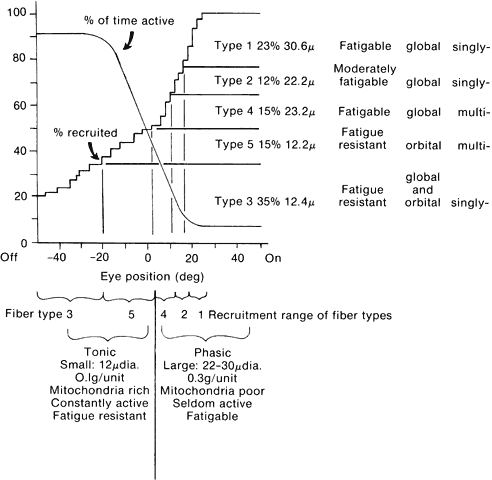

|
| Fig. 24. Hypothetic functional arrangement of eye muscle fiber types. Data on five types taken from Alvarado and Van Horn27 are at the upper right: percentage of fibers of each type, their average diameter, their fatigability, their location in global or orbital layers, and whether they are singly or multiply innervated (Peachy L: In Bach-y-Rita P, Collins CC, Hyde JE [eds]: The Control of Eye Movements. New York: Academic Press, 1971). Upper left, one curve indicates percentage of motor units recruited into activity for any angle of gaze. The other curve estimates percentage of time (e.g., in a day's activity) that a motor unit is active for units recruited at different thresholds. Below this are indicated eye position ranges over which various fiber types are recruited. It is proposed that type 3 is recruited first, type 1 last, and the two multiply innervated types, 4 and 5, around the primary position, and that the most useful definition of tonic and phasic is to distinguish fatigable from fatigue-resistant fibers. This in turn means that fibers that are recruited below the primary position are tonic, and those above, phasic. (Robinson DA: Personal communication, 1977.) |